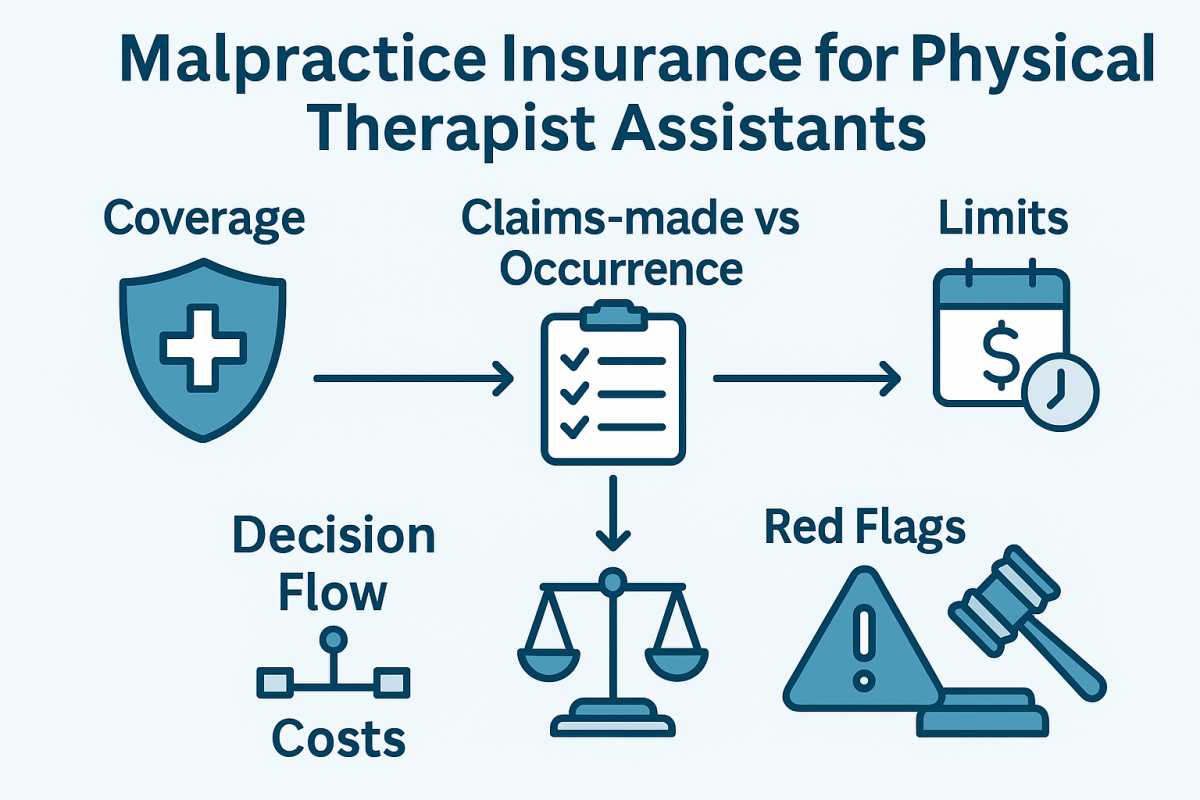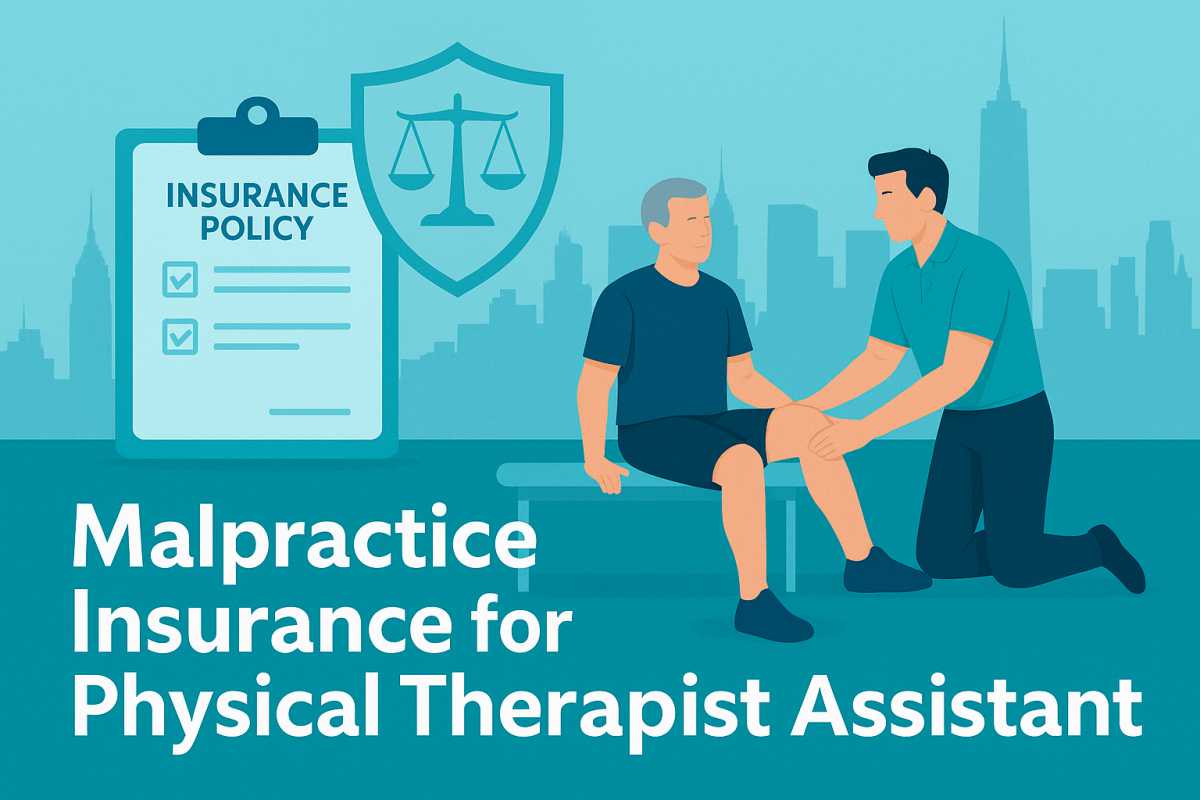If you’re a PTA, you work hands-on with patients under a supervising PT. That proximity is your superpower—and the main reason Malpractice Insurance for Physical Therapist Assistant roles matters. Clinic policies are designed to protect the business first. Your name may be listed, but limits can be shared across multiple providers and claims. A small, inexpensive individual policy adds a personal layer of protection and control over legal counsel and reporting. It also travels with you between jobs, per-diem shifts, or volunteer gigs.
In short: your employer’s coverage protects the clinic. Your policy protects your license, your livelihood, and your peace of mind.
What does PTA malpractice insurance usually cover?
Here’s a simple snapshot. Wording varies by carrier, but most policies include versions of the following:
| Coverage area | What that means for you |
|---|---|
| Professional liability | Allegations of negligence during treatment (improper guard, unsafe progression, modality burns, poor cueing). |
| License protection | Attorney fees if a board complaint threatens your PTA license. |
| Defense costs | Legal defense even if a claim is groundless. Often outside or in addition to limits. |
| HIPAA/privacy | Coverage for privacy breaches or records mishandling. |
| Good Samaritan | Emergency aid you render outside the clinic, within scope. |
| Personal injury | Libel/slander related to your professional services. |
| Deposition representation | If you’re subpoenaed as a treating provider. |
PTA-specific risk examples: patient falls during gait training, inadequate supervision on stairs, hot/cold pack skin injury, e-stim parameters not verified, incomplete documentation that complicates a post-event review. These are everyday realities—not scare tactics—and a policy is there for worst-case outcomes.
Claims-made vs. Occurrence (and “tail” coverage)
You’ll see two policy types:
Occurrence: Covers incidents that occurred during the policy period, no matter when the claim is filed later. You don’t need a tail policy when you switch jobs or go on maternity leave.
Claims-made: Covers claims that are made while the policy is active. If a claim arrives after you cancel, you’ll need tail coverage to keep protection for prior work.
If you move settings a lot (SNF → outpatient → home health) or take breaks, occurrence form is the simplest to live with. Claims-made can be fine too—just budget for the tail if/when you leave.
Related Article: Travel Physical Therapist Assistant Salary
Cost, limits, and how to size a policy
Premiums depend on state, setting (outpatient vs SNF vs acute), hours (part-time often costs less), and limits. Many PTAs pick limits like $1M per claim / $3M aggregate, but some employers or facility contracts may require higher. Balance three things:
Contract requirements (what your facility demands)
Personal risk tolerance (population complexity, autonomy level)
Budget (individual policies for allied health pros are typically affordable compared to the risk they offset)
Pro tip: if you travel between multiple facilities, confirm your policy language extends to all locations and telehealth, when applicable.

PTA vs PT coverage (and why keywords get confusing)
You’ll hear phrases like “malpractice insurance physical therapist,” “malpractice insurance for physical therapists,” and “physical therapist malpractice insurance.” Those terms usually target PTs, but the core mechanics are the same for PTAs: professional liability for patient-care errors. What differs is scope of practice and how your state board defines delegation/supervision. If you float between a PT’s plan of care and your own clinical judgment (within scope), the exposure looks similar. The takeaway: PTA policies are not an afterthought—they’re structured for the PTA role, supervision model, and board rules.
Related Article: What Education is Needed to Become a Physical Therapist?
Quick decision flow (if you only have five minutes)
Check your contract: Are you required to carry your own policy? What limits?
Confirm your employer’s coverage: Are limits shared? Do defense costs erode the limit?
Choose a policy type: Occurrence (simple) vs claims-made (+tail).
Match limits to risk: Higher acuity settings or heavy modalities might justify higher limits.
Add license protection: Board complaints are stressful; you want counsel funded.
If you want a neutral primer on what professional liability is in rehab contexts, see the APTA’s resources on professional liability (they offer general guidance that’s easy to scan): professional liability info.
FAQs (clear and candid)
Do physical therapists need malpractice insurance?
Yes—and so do PTAs. Even the best clinicians face unexpected events. An individual policy ensures you have dedicated limits and a lawyer who represents you, not just the facility.
I’m part-time/per-diem. Still worth it?
Arguably more so. You’re working across settings, with more variables. Many carriers offer part-time rates.
If my clinic is named in a lawsuit, am I automatically covered?
Not always the way you expect. Shared limits can be spent quickly, and the clinic’s attorney may prioritize the organization. Your own policy makes sure your defense is funded.
What if I switch jobs or pause my career?
Occurrence policies keep covering past incidents. If yours is claims-made, buy tail coverage so an old case doesn’t leave you exposed.
Does it help with board complaints?
Yes, if license defense is included. It’s a key feature—make sure it’s in your policy.
Related Article: Is Pelvic Floor Therapy Cover by Insurance
Bottom line
Malpractice Insurance for Physical Therapist Assistant professionals isn’t just a box to tick—it’s a practical tool that protects your license and career, and it’s usually inexpensive compared to the risk you carry in hands-on care. Whether you call it malpractice insurance for physical therapists, physical therapist malpractice insurance, or simply malpractice insurance physical therapist, the core idea stays the same: protect your practice, your paycheck, and your peace of mind with a policy that fits how—and where—you actually treat.
